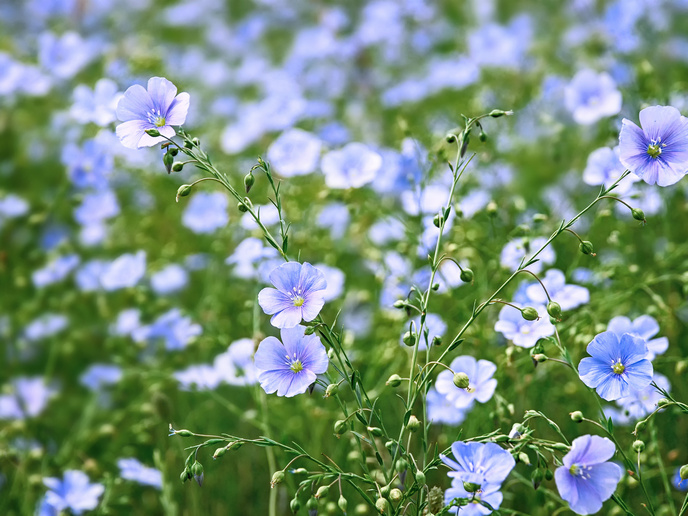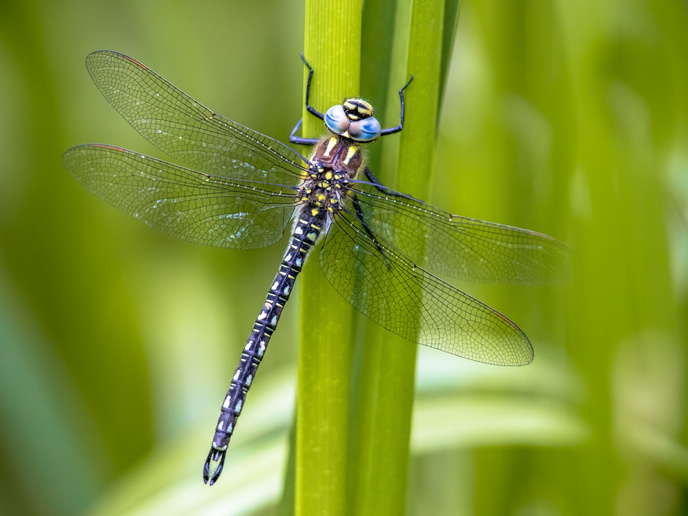How flax plants and their pollinators promote diversity across Mediterranean ecosystems
Biodiversity represents life’s ability to adapt and evolve amid global changes. A key driver of biodiversity is the evolution of organisms under natural selection exerted by other organisms. This dynamic is exemplified in the relationship between flowers and their pollinators. Central to this interaction is how well the reproductive parts of angiosperms match the shape and size of their pollinators, which helps ensure a successful interaction. In a study to show how the reproductive traits of flowers and pollinator bodies work together to sustain biodiversity in the Mediterranean-type ecosystems, the FLAXMATE project used flaxes as their model owing to their notable diversity within these environments. The project received funding from the Marie Skłodowska-Curie Actions programme.
New insights into what shapes pollinator interactions and boosts cross-pollination
Extensive fieldwork in South Africa and Europe enabled researchers to identify pollinator species associated with flax plants. “Our findings revealed that a species’ pollination system significantly influences the evolution of its mating phenotype,” says Juan Arroyo, project coordinator. On a broader scale in angiosperms, similar analyses showed that heterostyly, and related style-length polymorphisms – where flowers have reciprocal heights of male (stamens) and female (pistil) reproductive organs to encourage cross-pollination – is linked to specific floral traits and pollinator behaviours. “These work together to enhance precise pollen transfer onto the pollinator’s body,” notes Arroyo. “Through comparative analysis across all angiosperms, we found that these floral polymorphisms are far more widespread in angiosperms than earlier studies had shown. These findings also validate the Darwinian hypothesis that pollinators are proficient in interacting with specific style variations (differences in the flower’s reproductive structures), which enhances cross-pollination efficiency,” adds Arroyo.
New clues to pollination mechanisms at play
Previous findings regarding pollinator behaviour in angiosperms also imply that the structure and traits of the flower influenced by heterostyly determine how pollen is deposited on specific parts of the pollinator’s body. This maximises the chances that the pollen will be effectively transferred to another flower of the same species, improving cross-pollination efficiency. To further understand the interaction between flaxes and their pollinators, the team conducted experiments using quantum dots as pollen labels. These experiments demonstrated that pollen grains are deposited on specific parts of pollinators’ bodies, corresponding to the mating phenotypes of the flowers. New quantitative measures were also devised to evaluate pollination accuracy across populations with varying mating phenotypes.
Investigating what shapes flax diversity and evolution
Comparative analyses also demonstrated that pollination systems strongly influence how mating traits evolve, but these traits do not directly affect how diverse the flax clade(opens in new window) becomes. To deepen their understanding of floral diversity, researchers conducted geometric morphometric analyses to quantitatively assess mating phenotypes in flax species. A HybSeq(opens in new window) phylogeny was also developed for yellow flaxes, using simultaneous data collection of low-copy nuclear genes and high-copy genomic targets. This approach advanced phylogenomic studies, offering insights into evolutionary relationships. Researchers studied what causes stylar polymorphisms to evolve repeatedly in flax species – a key trait moulding their mating systems. The team also examined how geographic distribution affects the diversification rates of flax lineages. “Our research provided insights for addressing the ongoing decline and shifting in pollinator populations and shaping European environmental policies. Furthermore, since the Mediterranean Basin hosts most flax species, findings on breeding and mating systems offer valuable tools for future crop breeding programmes,” concludes Arroyo.







